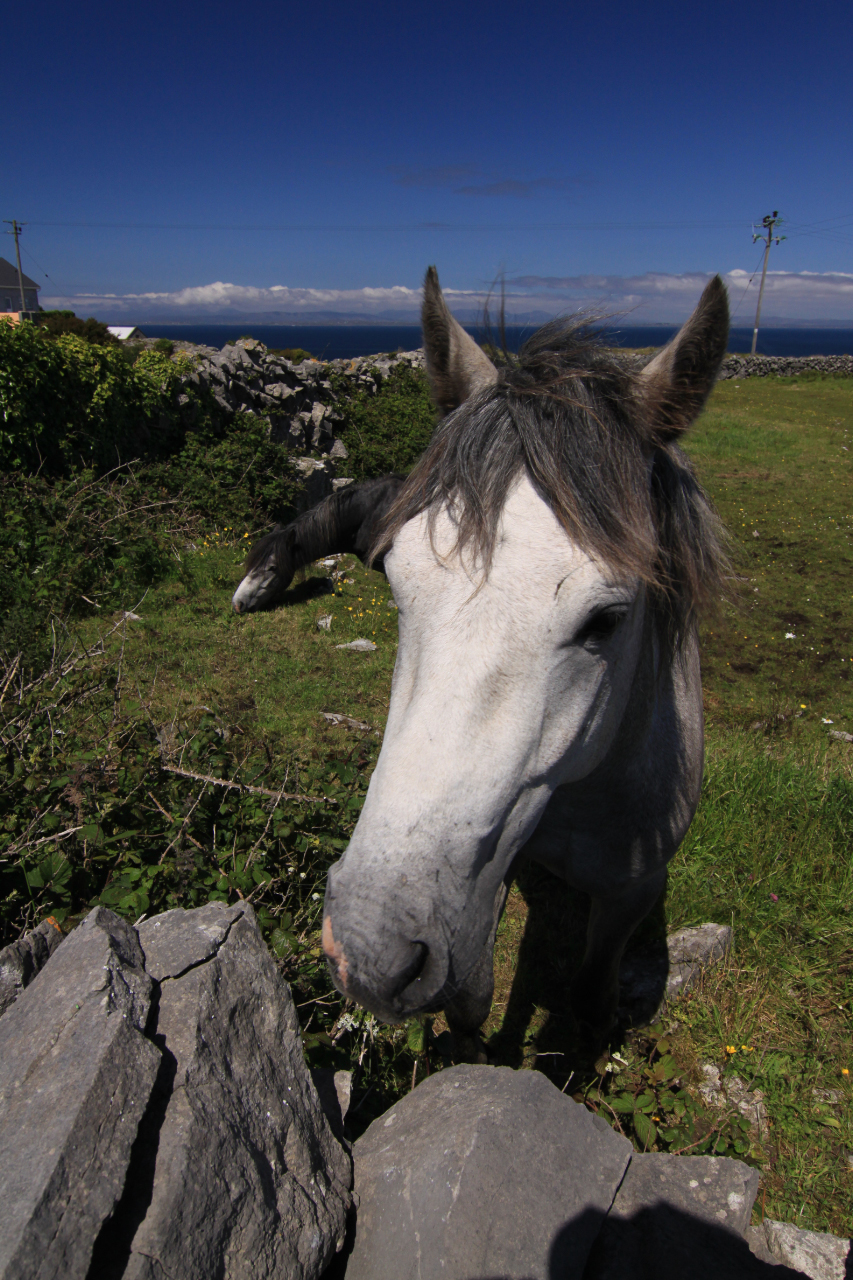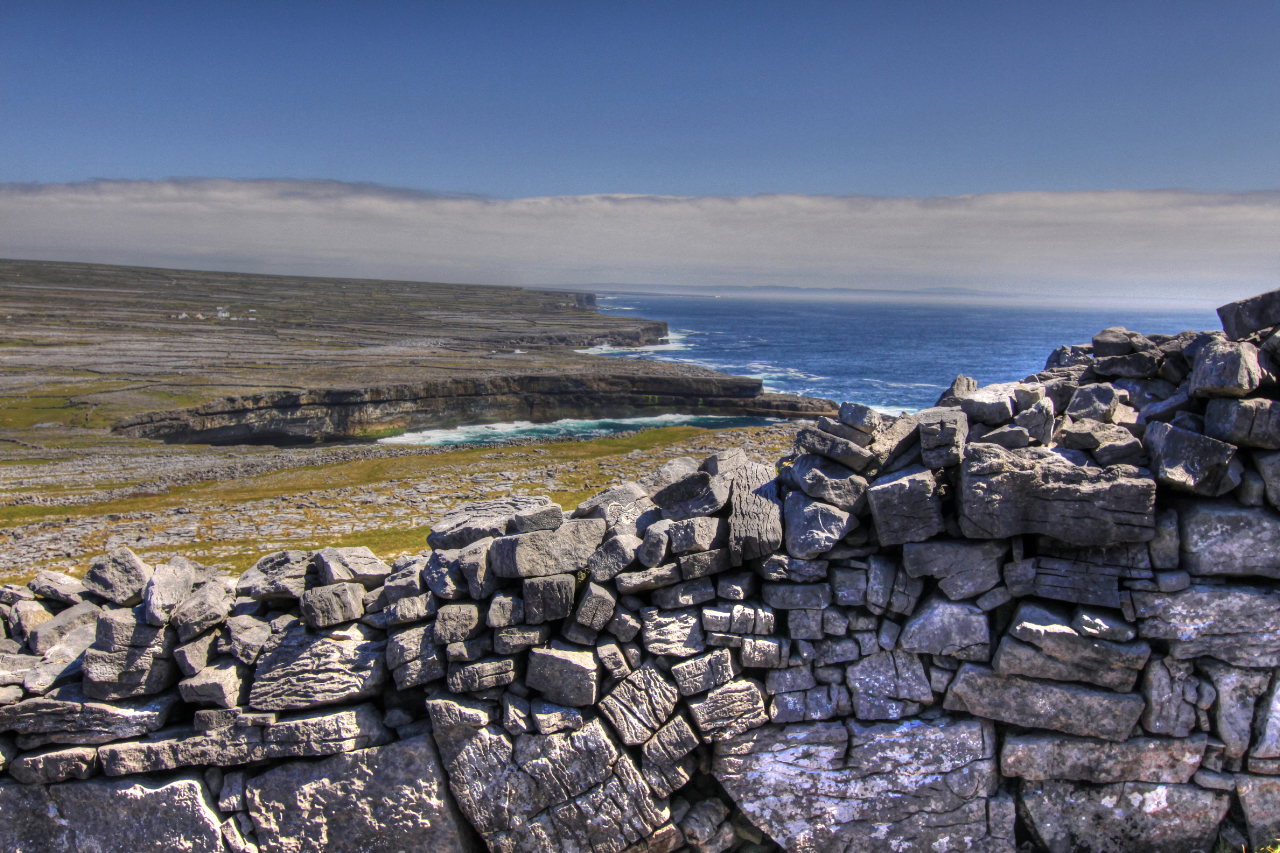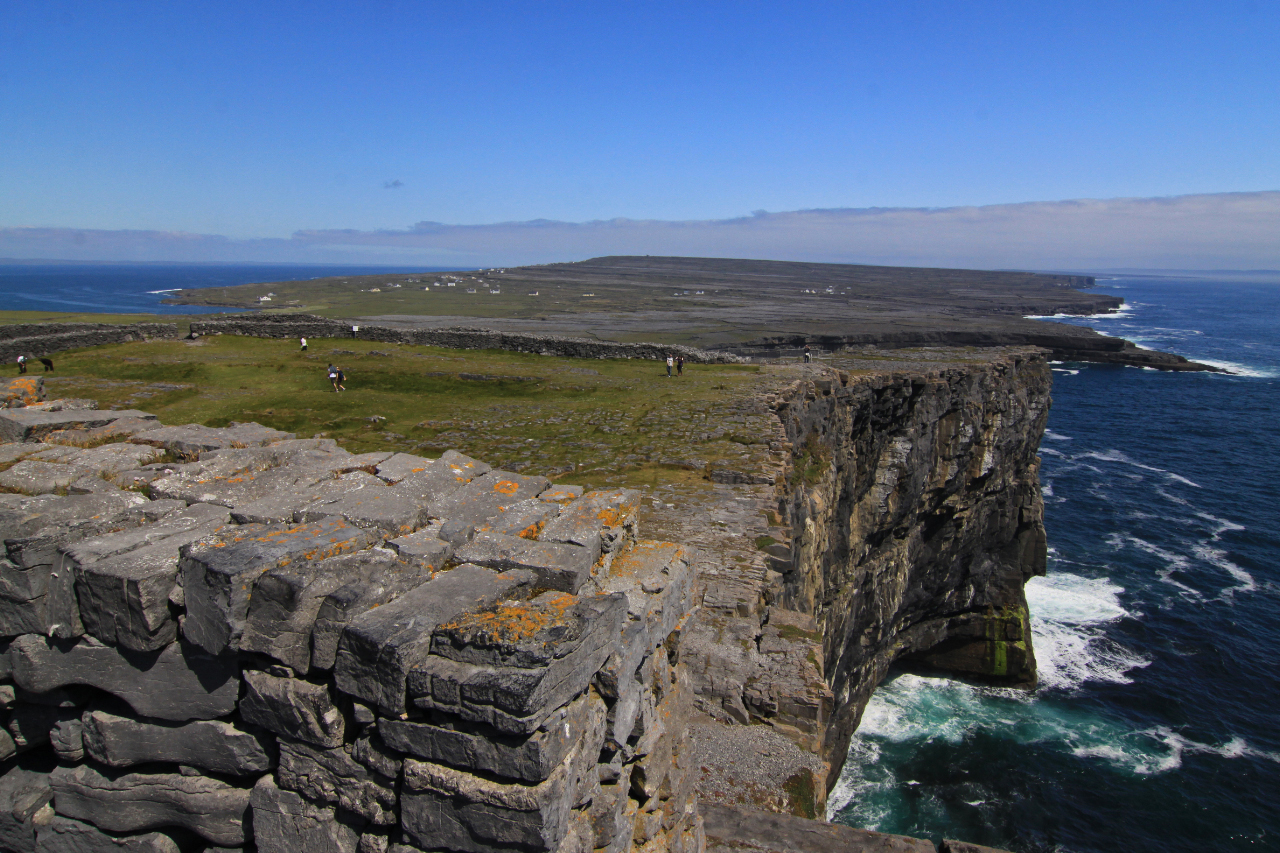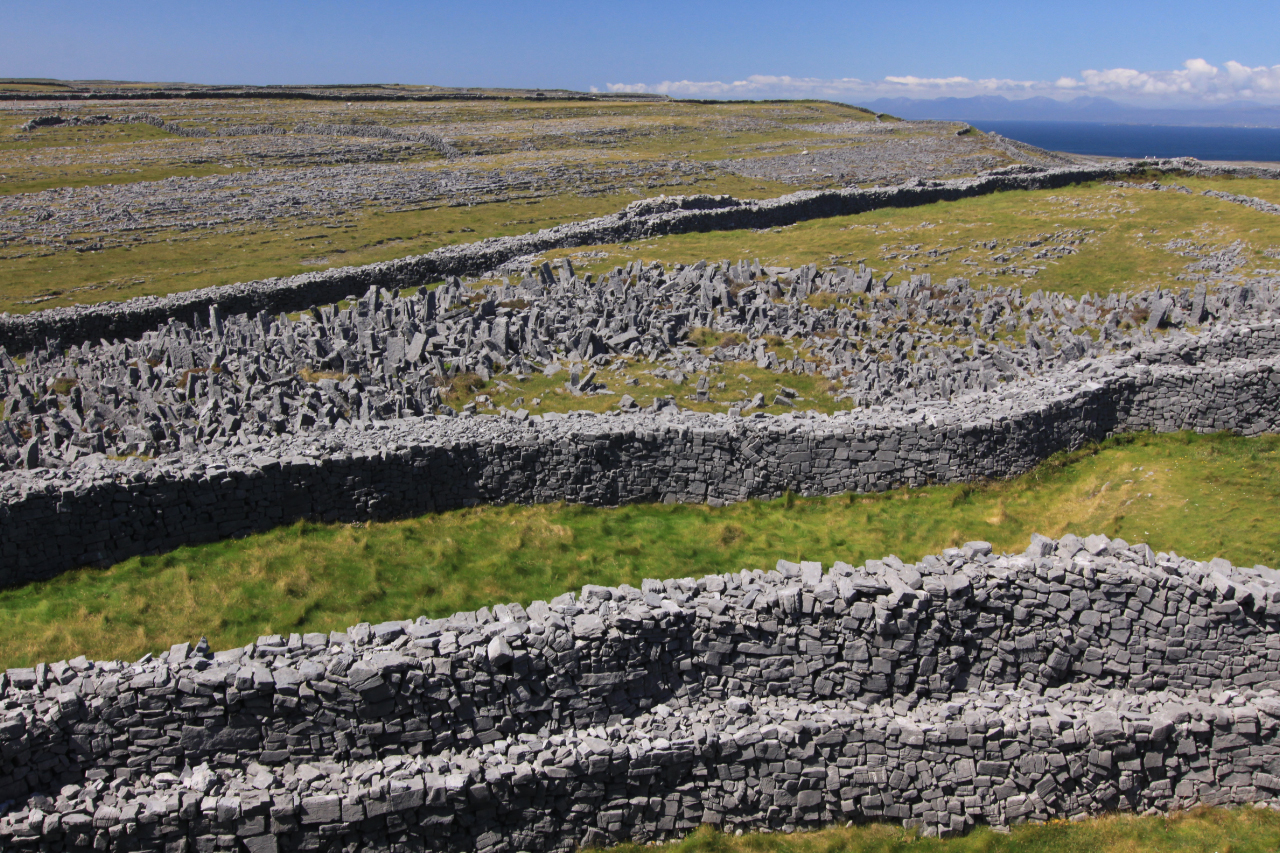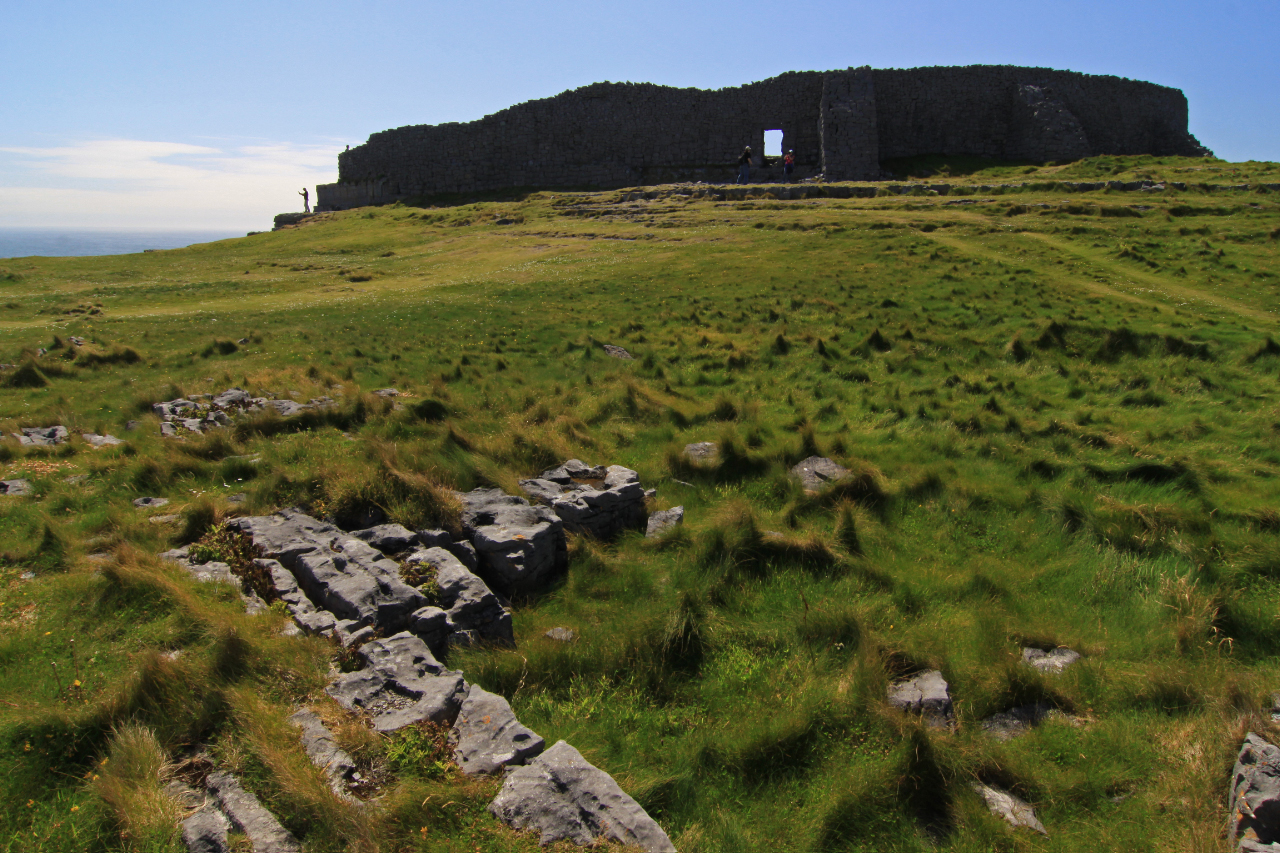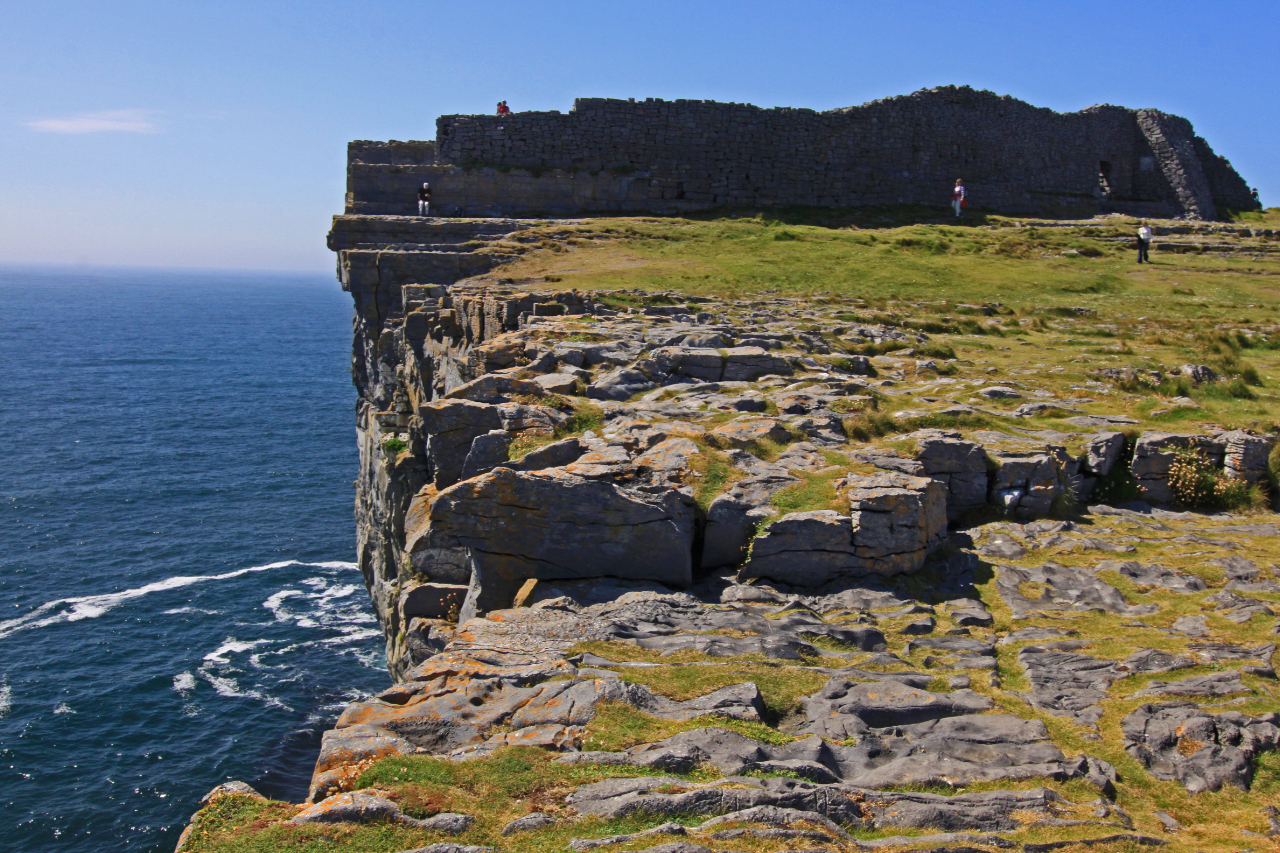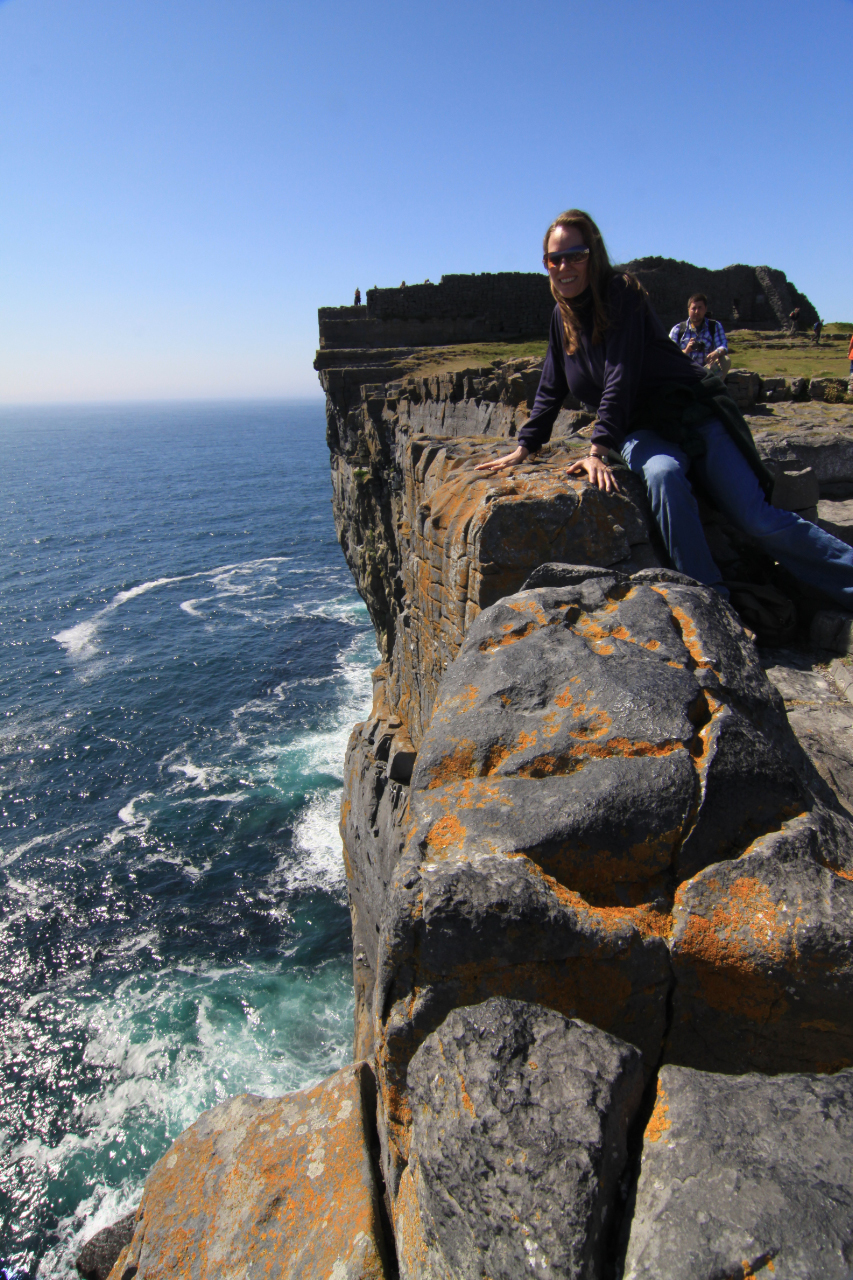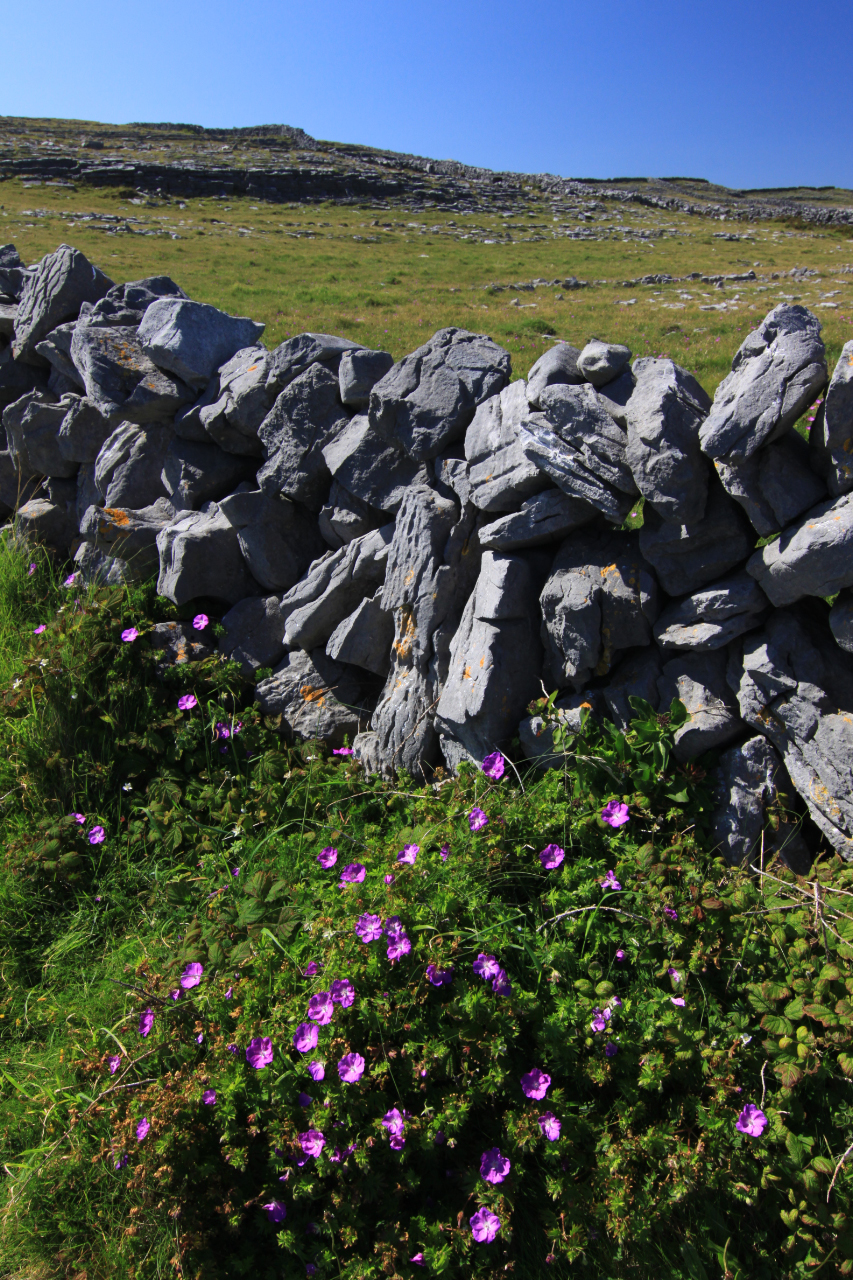Dún Aonghasa, or Dun Aengus, is the most famous of several prehistoric forts on the Aran Islands. It is located on Inishmore at the edge of an approximately 300 feet high cliff. Dún Aonghasa is an important archaeological site that also offers a spectacular view. It is not known when Dún Aonghasa was built, though it is now thought to date from the Iron Age, and is surmised to have been built in the 2nd century BC. The fort consists of a series of four concentric walls, with some of the surviving stonework is 12 feet wide at some points. The original shape was presumably oval or D-shaped but parts of the cliff and fort have since collapsed into the sea. Outside the third ring of walls lies a defensive system of stone slabs, known as a cheval de frise, or “friesan horses”, planted in an upright position in the ground which would have made any surge of the fort extremely challenging.
Any visit to Inishmore and the Aran Islands is an adventure. You can catch a ferry at several locations on the Galway coast and enjoy the hour long boat ride to the islands. Upon arriving, we rented bicycles and started on the challenging ride, which was uphill almost the entire way, to the fort which is located on some of the highest ground on the island. The last leg of the journey requires you to park your bike in a sea of bike racks, and walk the final mile or so across an uphill gravel pathway. The scenic view at the fort site, however, is well worth the effort to get there! Dún Aonghasa has been called “the most magnificent barbaric monument in Europe”.
The islands are stunningly beautiful, with stone walled country roads that barely fit more than one car and a bike, and green pasteural settings in every direction, with the sea as their backdrop.

